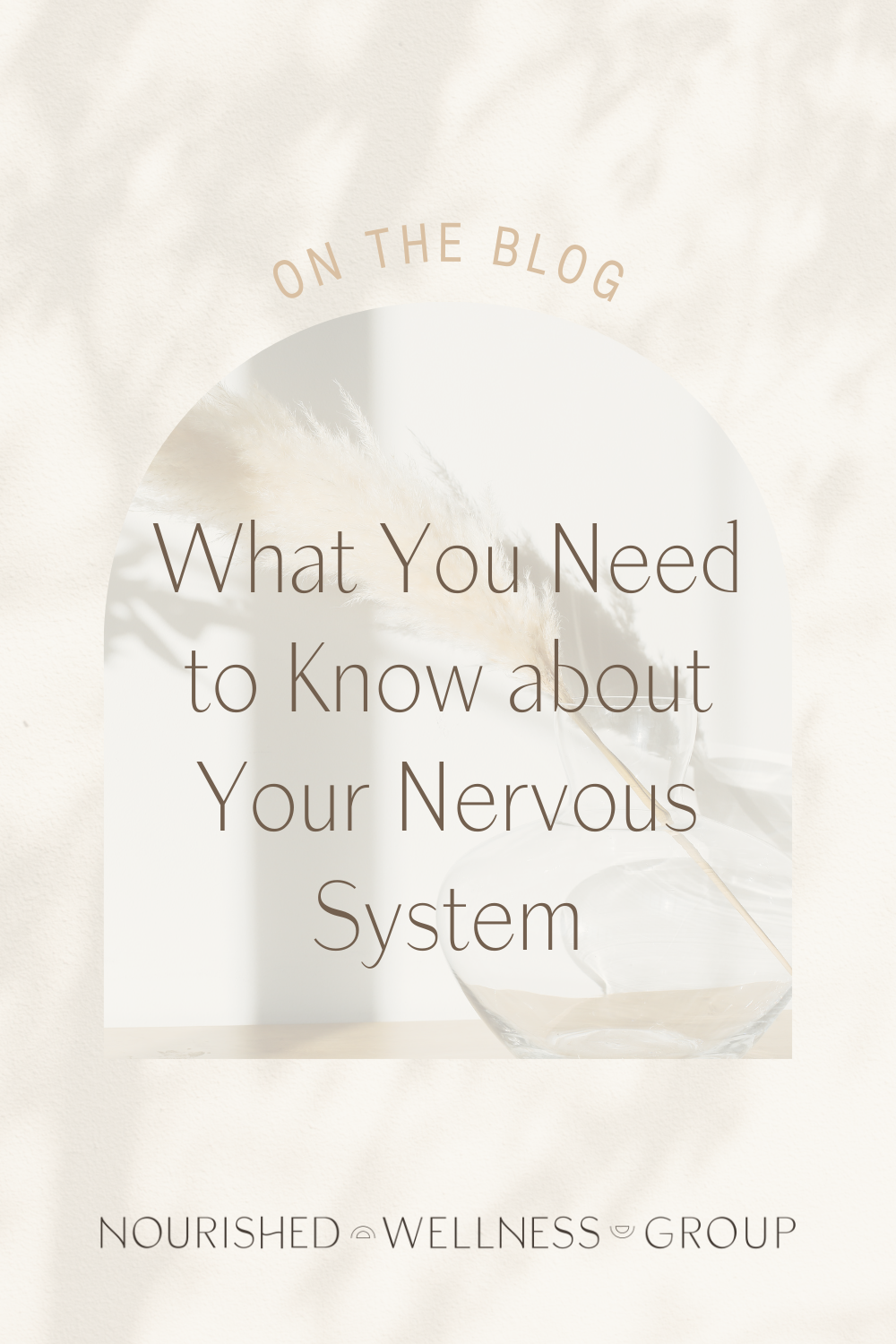Signs of Nervous System Dysregulation
Our Three States
Our nervous systems are intended to move flexibly from state to state, and even blend states. Flexibility allows us to recover from stressors more easily. We have three main states: safe + social, mobilized, and immobilized. When our nervous systems are healthy, we easily move from state to state.
When we experience stressors, we can move into the mobilized and immobilized states. Sometimes we might find ourselves getting stuck in these states longer than we would like, we call this nervous system dysregulation. The good news is that nervous system regulation can return you to flexibility and to feeling safe in your own body. Let’s learn more about our three states…
Safe + social
This is the state most of us seek to be in. While it’s healthy and normal to move into and out of this state, some of us don’t find ourselves in this state as often. This is our ventral vagal nervous system state which is often referred to as ‘safe + social’ or ‘rest + digest’.
In this state we communicate well, feel curious, calm, and present. Our body’s response is to increase digestion, immune functioning, our pain threshold, capacity for deep breathing, improved sleep, and blood pressure.
“Our social engagement system is active in the ventral vagal pathway of the parasympathetic branch. In this state, our heart rate is regulated, our breath is full, we take in the faces of friends, and we can tune in to conversations and tune out distracting noises” (Dana, 2018).
Mobilized
This is our sympathetic activation state, often referred to as ‘mobilized’. “Fight or flight happens here. In this state, our heart rate speeds up, our breath is short and shallow, we scan our environment looking for danger—we are ‘on the move’” (Dana, 2018). In health, we move into and out of this state with ease.
If your nervous system gets stuck in the mobilized state you may notice:
Anxiety
Digestive issues
Restlessness
Chronic pain
Difficulty sleeping
Irritability
Being hyper-aware of your surroundings
Fear or panic
If we get stuck in the mobilized state, we are essentially chronically living in a stress response. The body is constantly prepared to fight or flight to survive. This will have impacts on our physical, emotional, and mental health.
Immobilized
This is our dorsal vagal state, referred to as ‘immobilized’. Our ‘freeze’ stress response happens here. Clients have described this state as feeling ‘shut down’ or ‘under water’.
“Our oldest pathway of response, the dorsal vagal pathway of the parasympathetic branch, is the path of last resort. When all else fails, when we are trapped and action taking doesn’t work, the “primitive vagus” takes us into shutdown, collapse, and dissociation” (Dana, 2018).
When your nervous system gets stuck in the immobilized state you may notice:
Low mood
Exhaustion
Poor digestion
Chronic fatigue
Feeling disconnected
Gaps in memory
Low blood pressure
Low immune functioning
why Regulation matters
When our nervous systems are dysregulated we may be more easily impacted by the emotions of others, more sensitive to sensory information, and may react in ways that are disproportionate to the situation. It disrupts our bodies ability to properly handle stressors and function as it’s intended to.
The nervous system connects our brains and our bodies – it impacts our mental and physical health. Whole healing happens when we are able to exist in healthy nervous systems, move flexibly between states, and experience calm + ease.
how we can help
Nervous system regulation is key. At Nourished, we take a holistic approach to therapy. We focus on creating individualized treatment plans for each client, finding and integrating the right options for you. We offer several Mind and Body based therapies to treat you as a whole person:
Brainspotting
Yoga Therapy
References:
Dana, D. (2018). The Polyvagal Theory in Therapy: Engaging the Rhythm of Regulation. W.W. Norton & Company, INC.
Pin This Post!
Related Posts
If this post was helpful, you might also like these…










